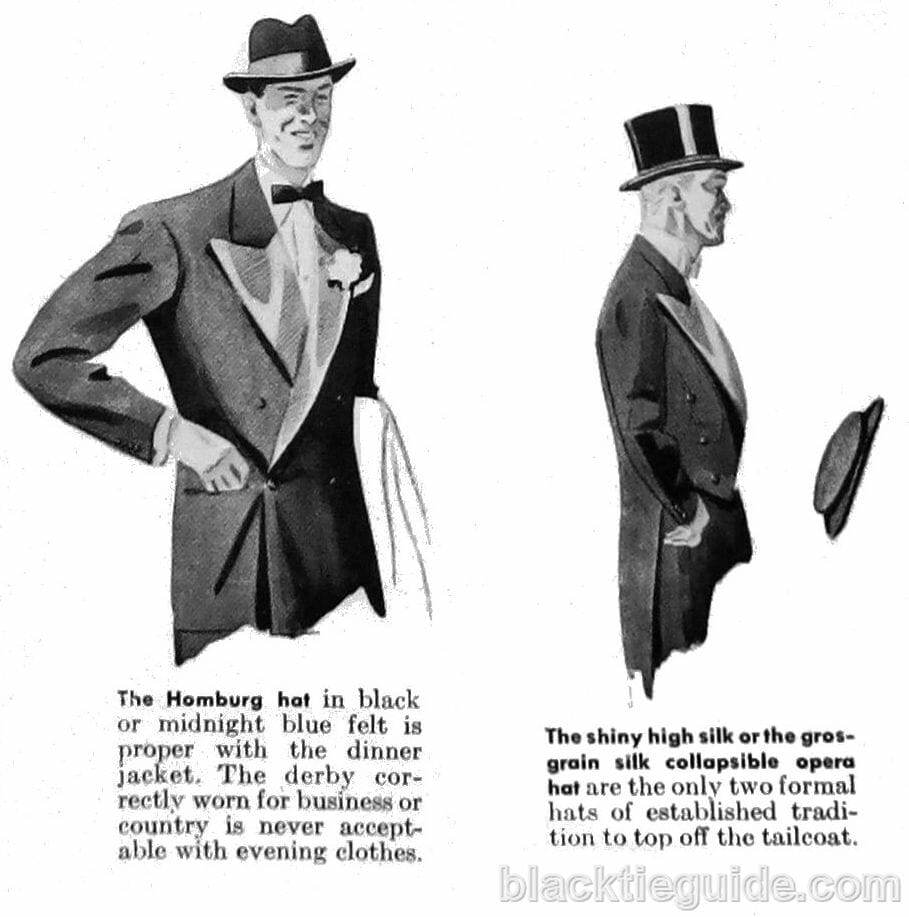Here’s an interesting look back at the “correct details” of evening clothes circa 1940 courtesy of Esquire magazine. While some of the advice is specific to that particular period the vast majority of it remains pertinent to this day.

When you buy something using the affiliate links on our site, we may earn a small commission.
Here’s an interesting look back at the “correct details” of evening clothes circa 1940 courtesy of Esquire magazine. While some of the advice is specific to that particular period the vast majority of it remains pertinent to this day.

Comments are closed.
Debonair looks too good on you to second guess.
We're So Glad You're Here.
Nice illustrations and – as you say – still excellent advice.
I see that grosgrain silk facings appear to be standard, whilst glossy satin is described as less popular but with high fashion appeal – almost a reversal of the current situation where grosgrain is the more unusual and generally considered to be the swankier look.
An even softer, less shiny and more elegant look for lapels, cummerbunds, and trouser stripes on tuxedo pants (evening wear trousers require a double military braid), is the finer-lined faille finish obtained by using the finer-lined faille fabric.
Faille (rhymes with “pail”) is a ribbed fabric with a low luster. Heavier yarns are used in the filling or weft. Grosgrain is one example of faille, though heavier in line and look. Most failles are finer & flatter than grosgrain, but they are in the same family.
Silk, rayon, or polyester fibers are commonly used. I have always used silk faille on my tuxedos and evening wear and moire silk for my braces.
Steve Sader
I was scrolling through Debrett’s instructions on formal attire when I came across the claim that “Cummerbunds are not considered essential but may be worn” followed by “Waistcoats may be worn and may be considered a smart option; a waistcoat and cummerbund are never worn together”. This implies that wearing neither is an option.
I understand that in spite of being THE reference for all things etiquette, Debrett’s has been trying to give a contemporary take on attire and social behaviour. But this flies in the face of everything The Guide holds sacred (most of the negative remarks refer to showing waistline, open jackets and protruding white waistcoats).
Is there any basis to their claim or should this comment be completely ignored?
Sadly, etiquette authorities have no choice but to reflect trends in society regardless of how impractical or distasteful said trends may be. It’s a shame that Debrett’s doesn’t at least explain the folly of the general preference for bared shirt waists.